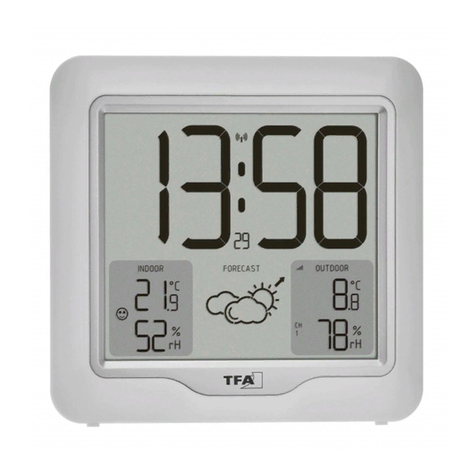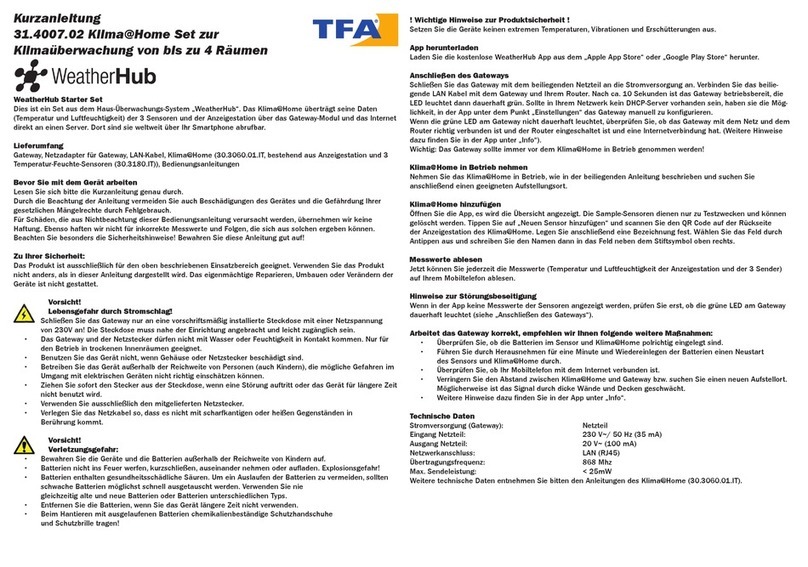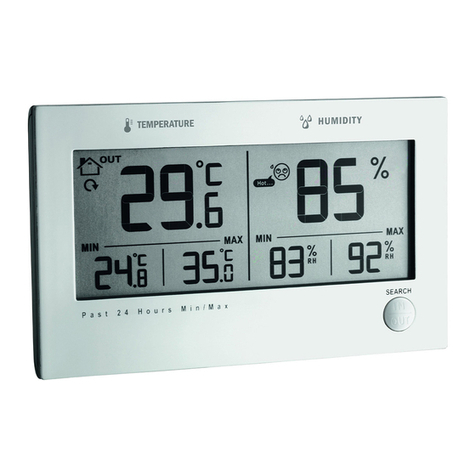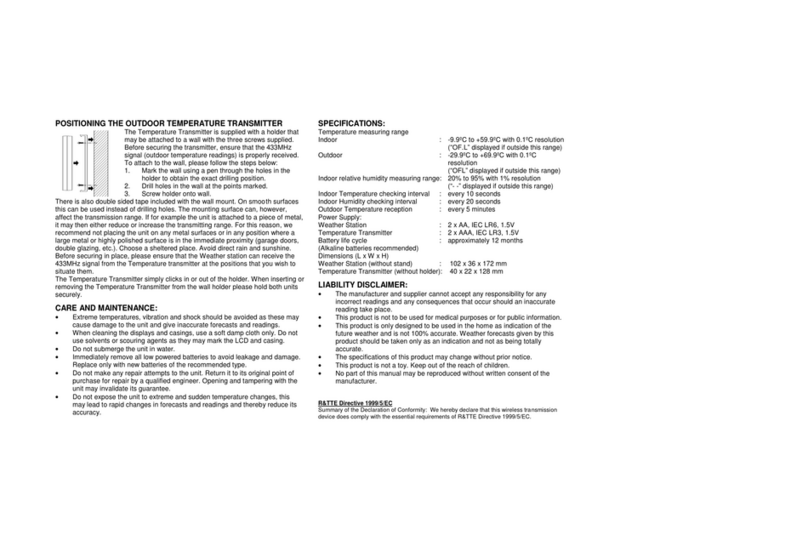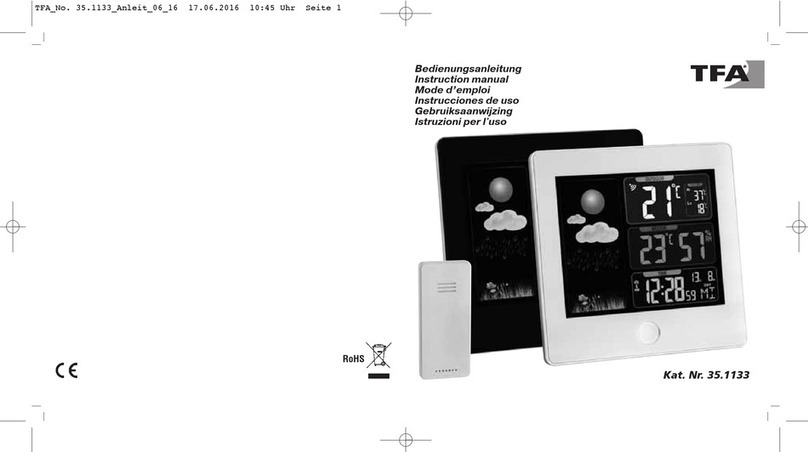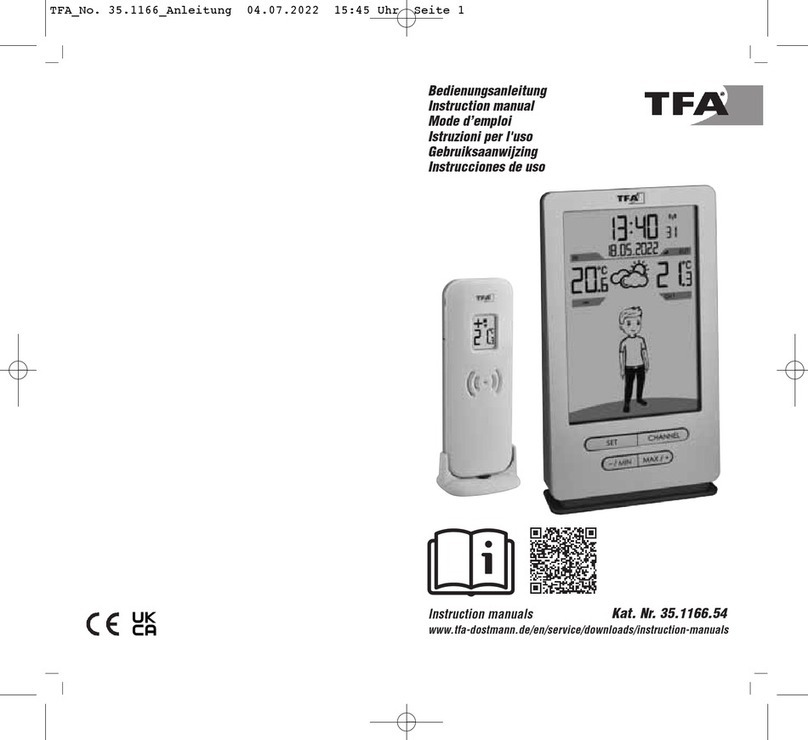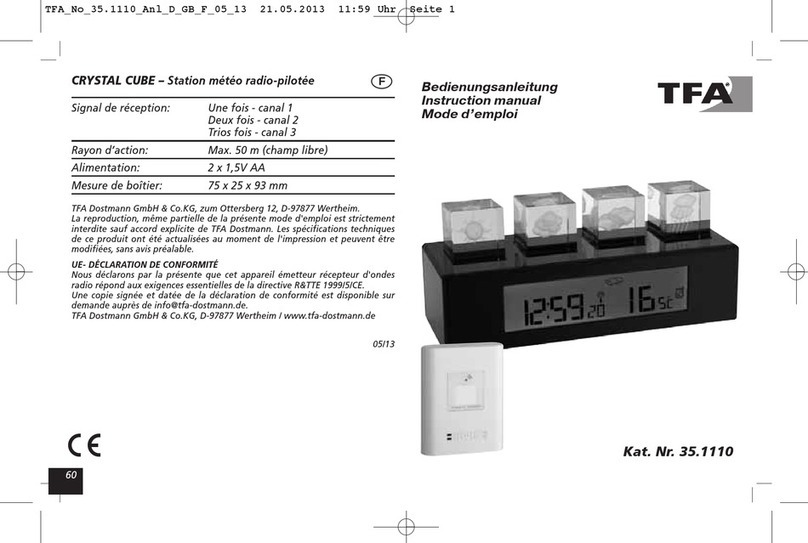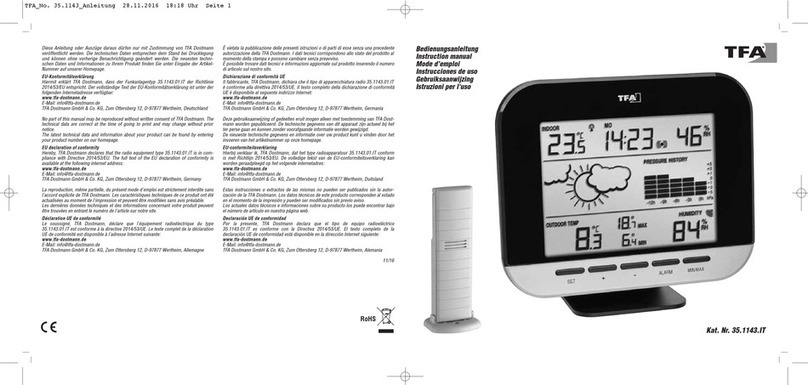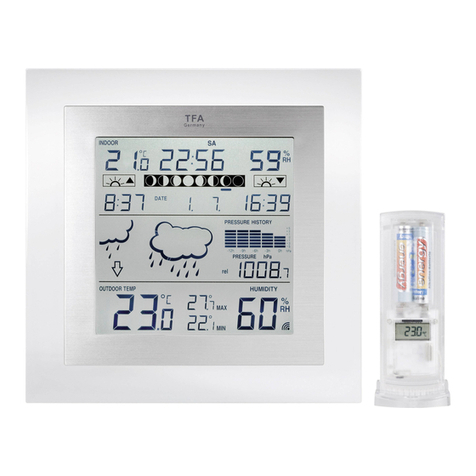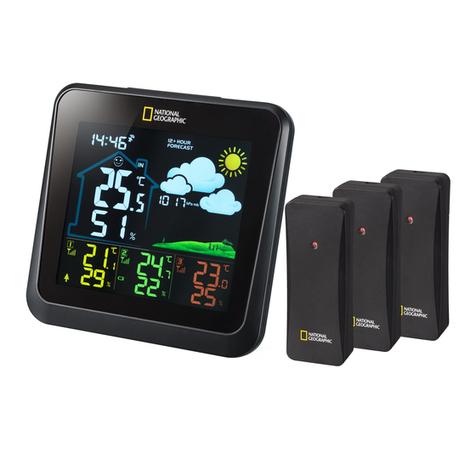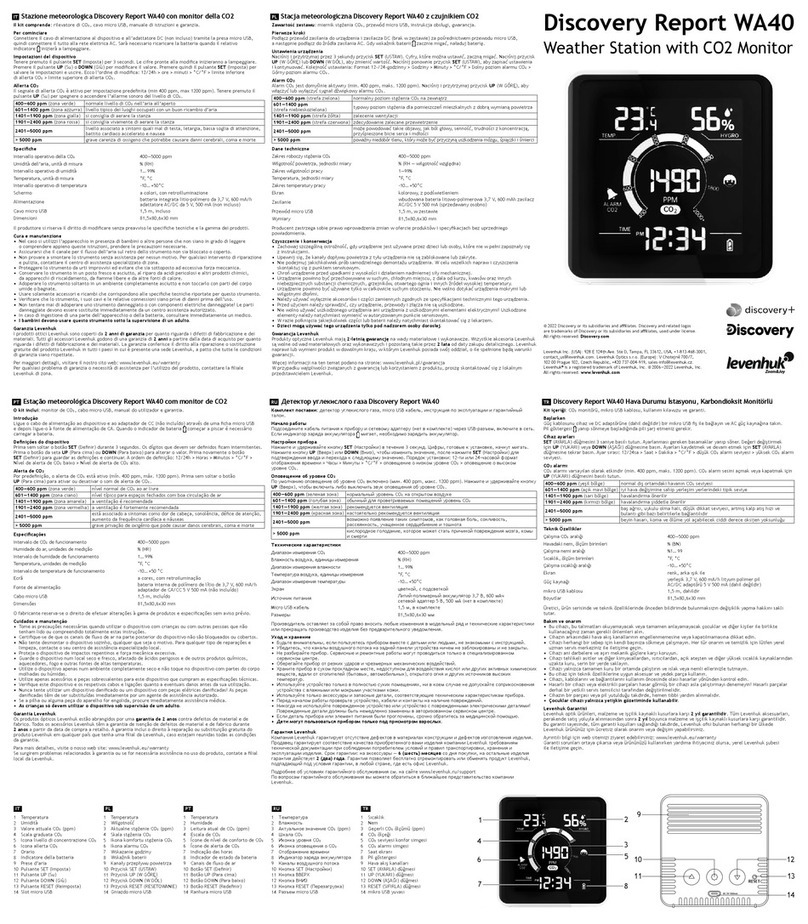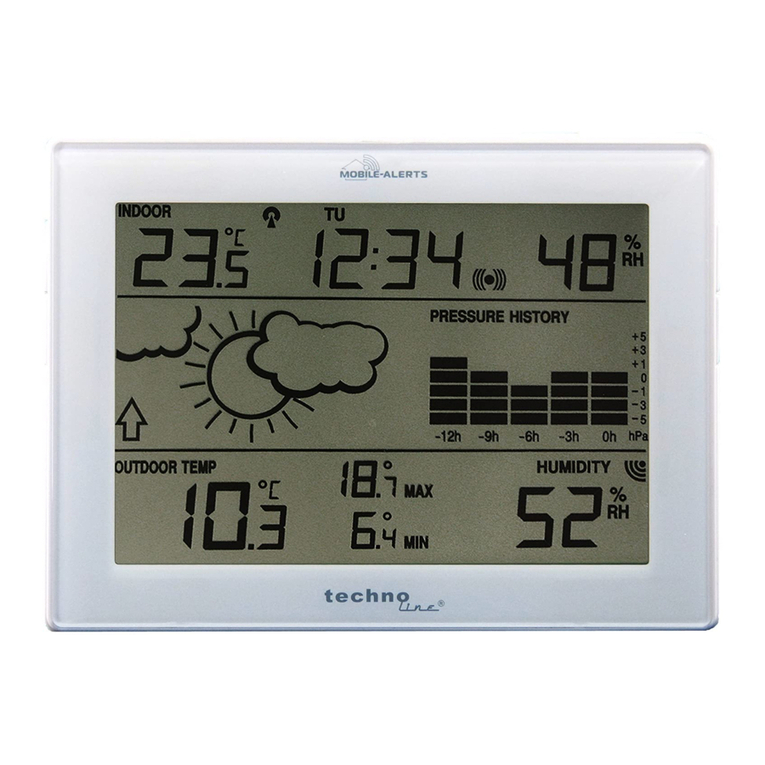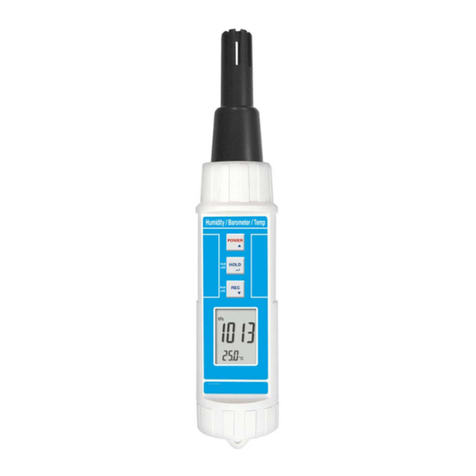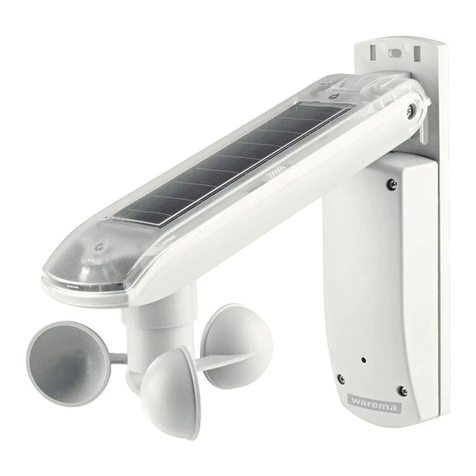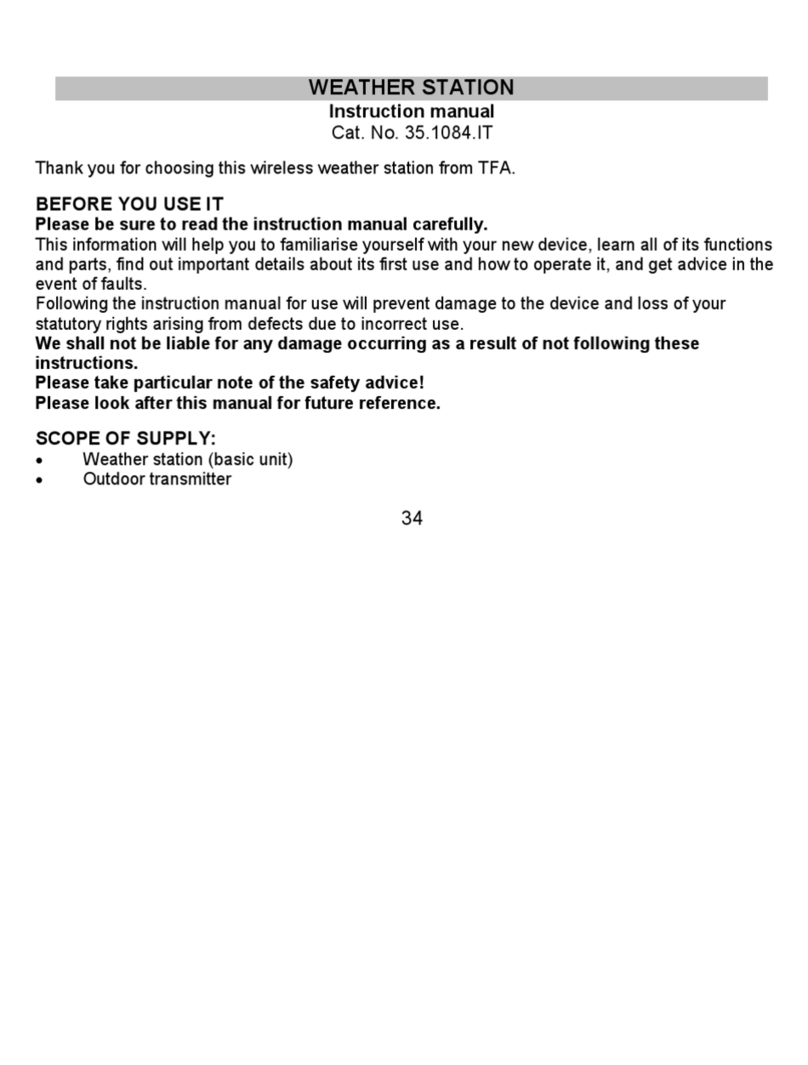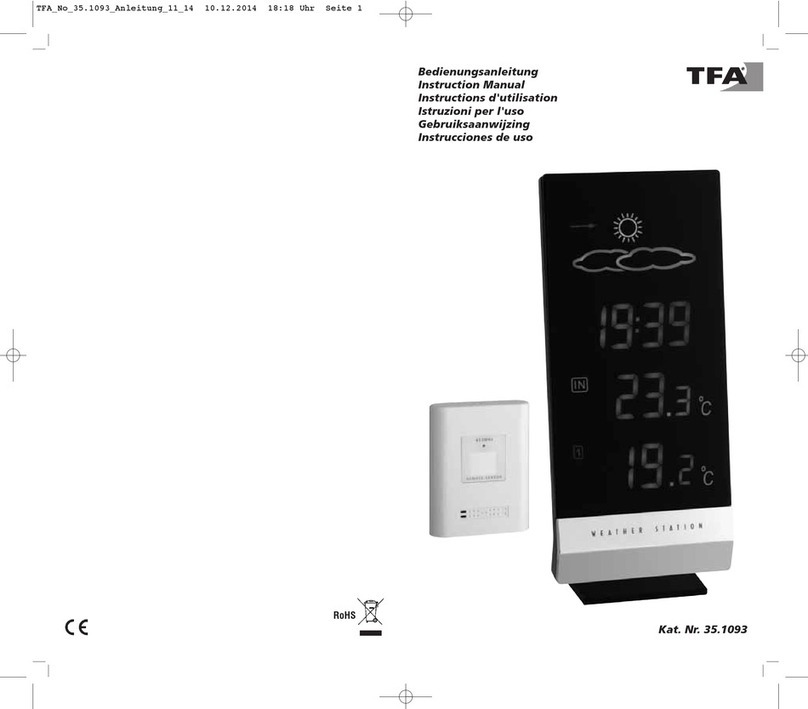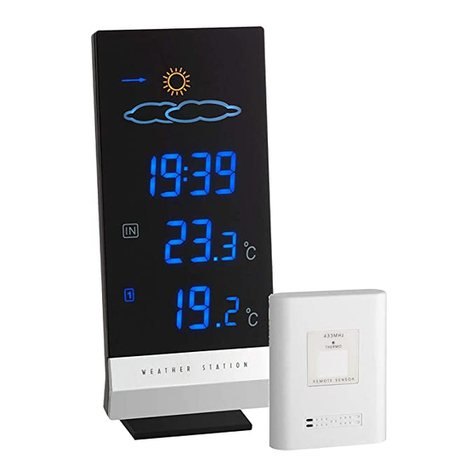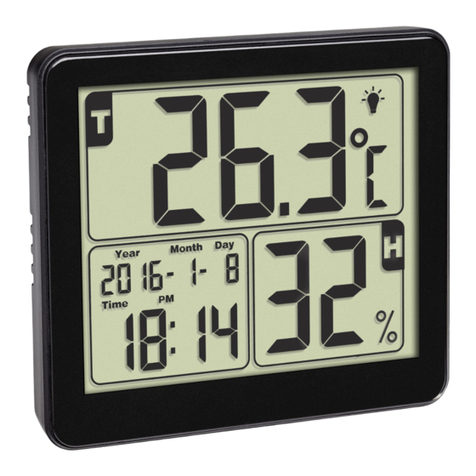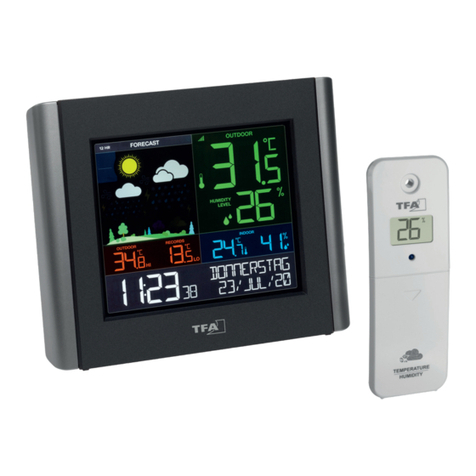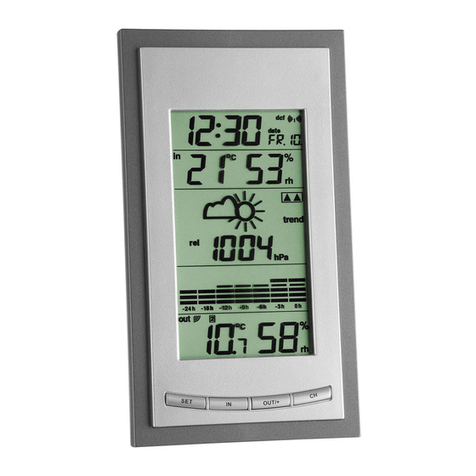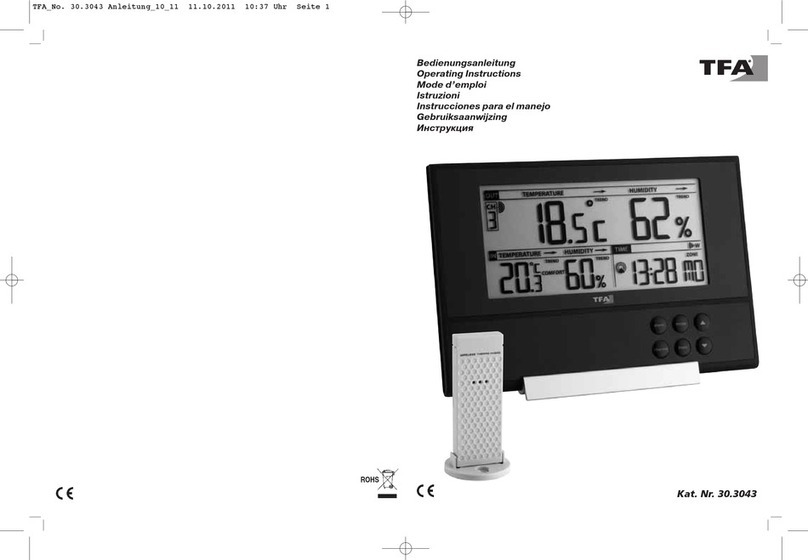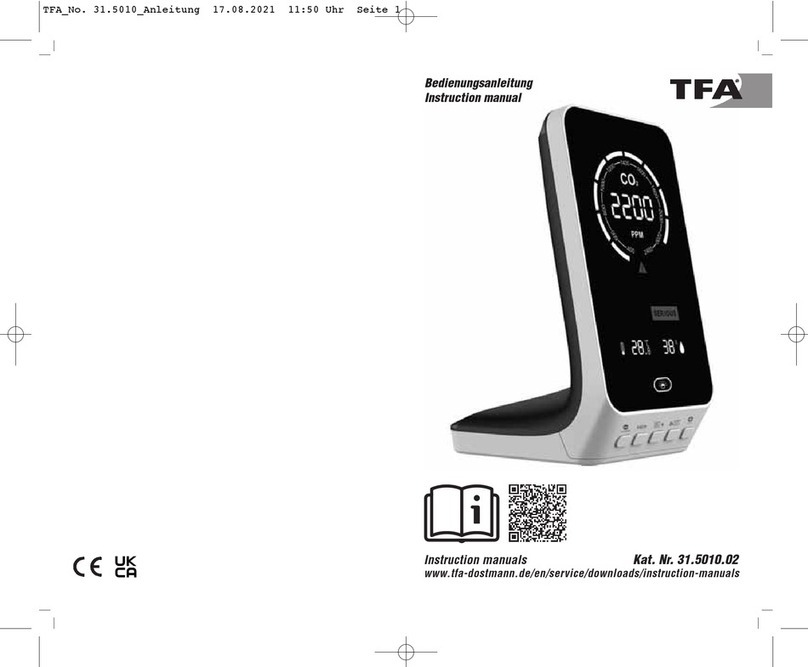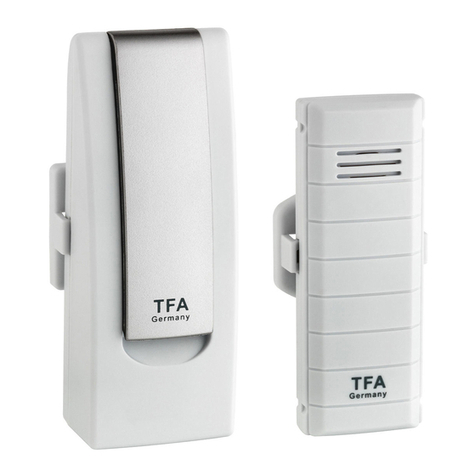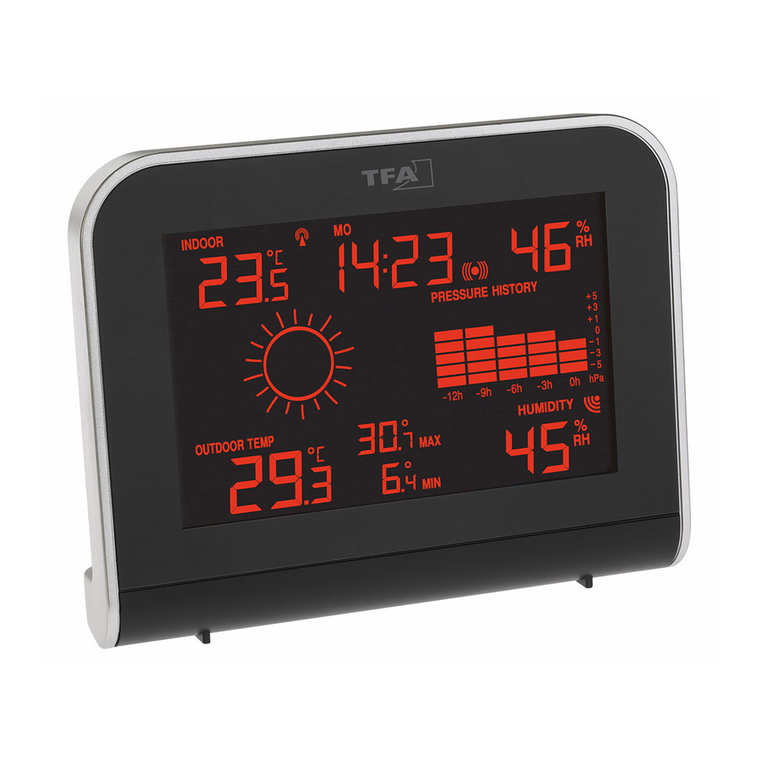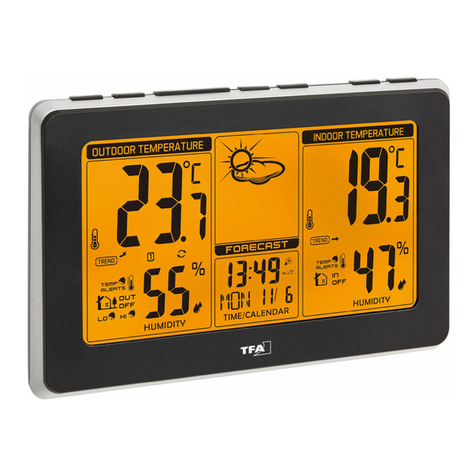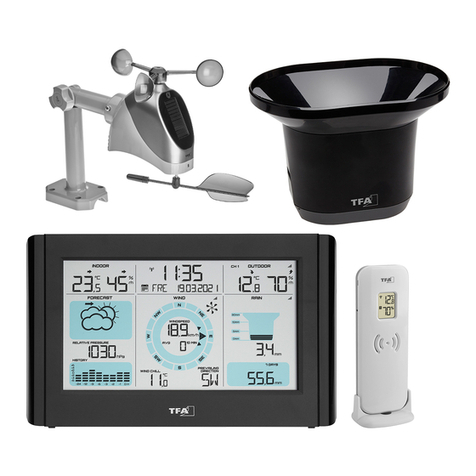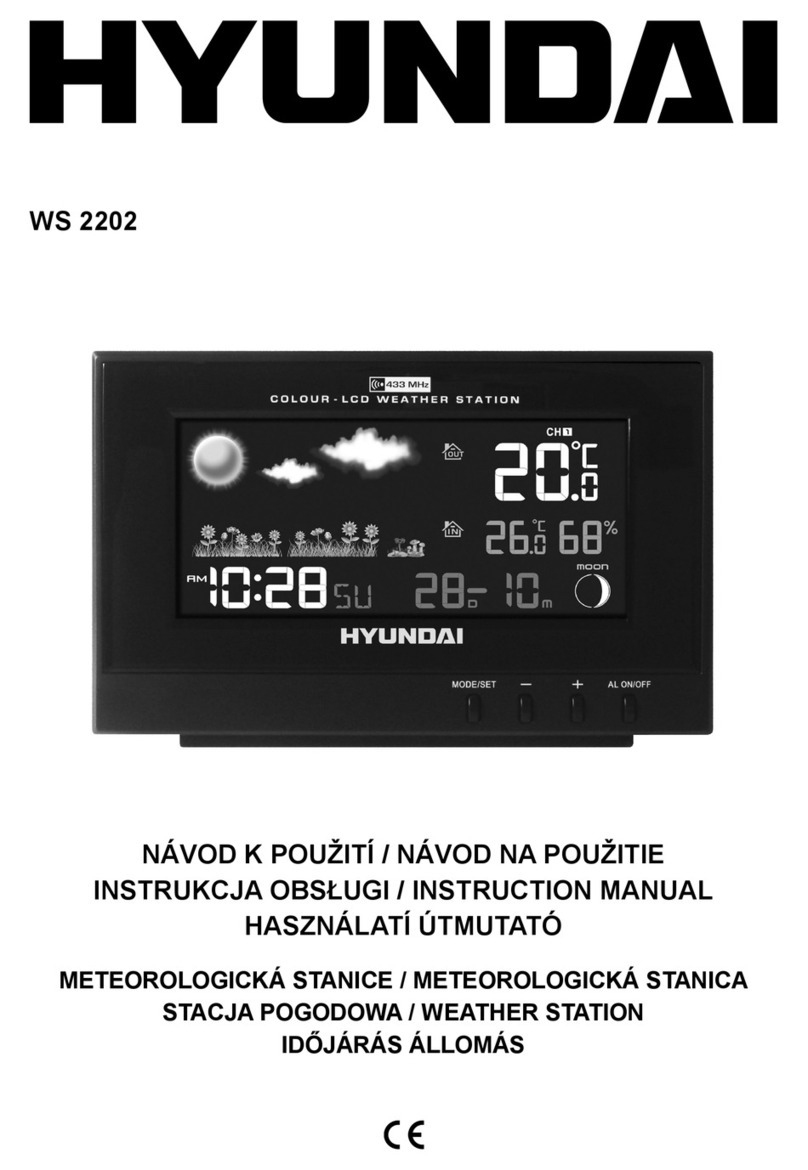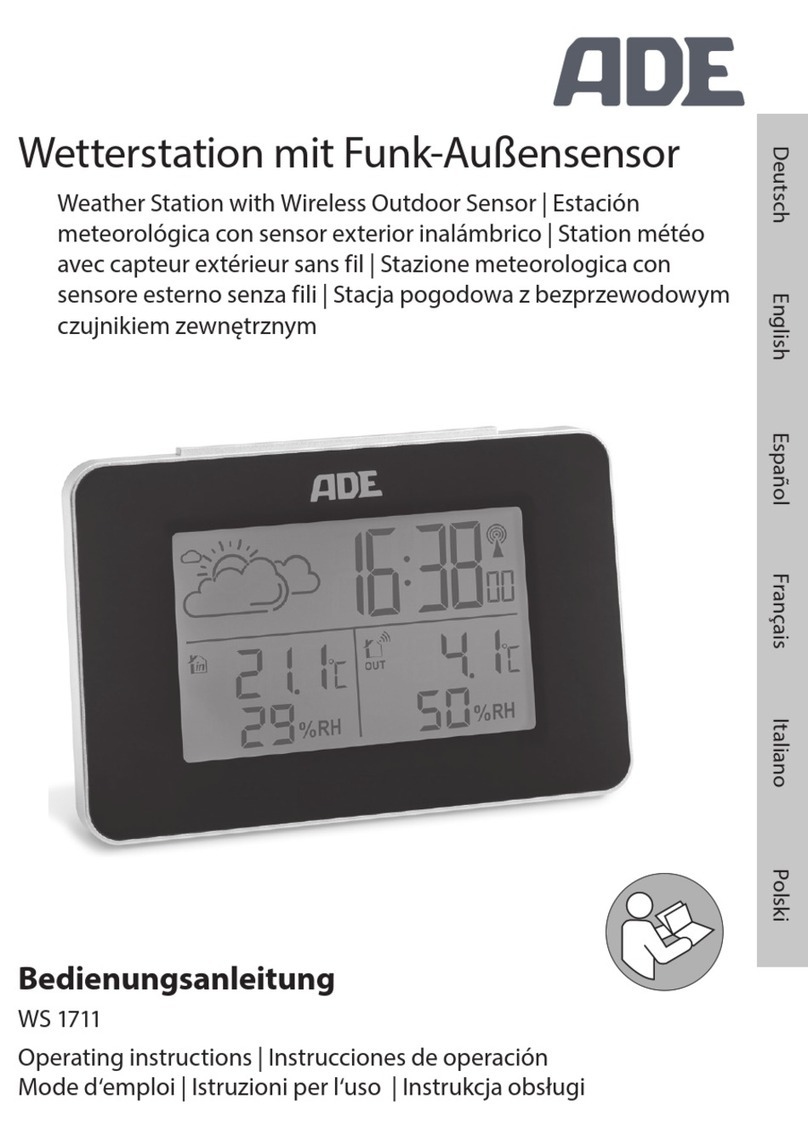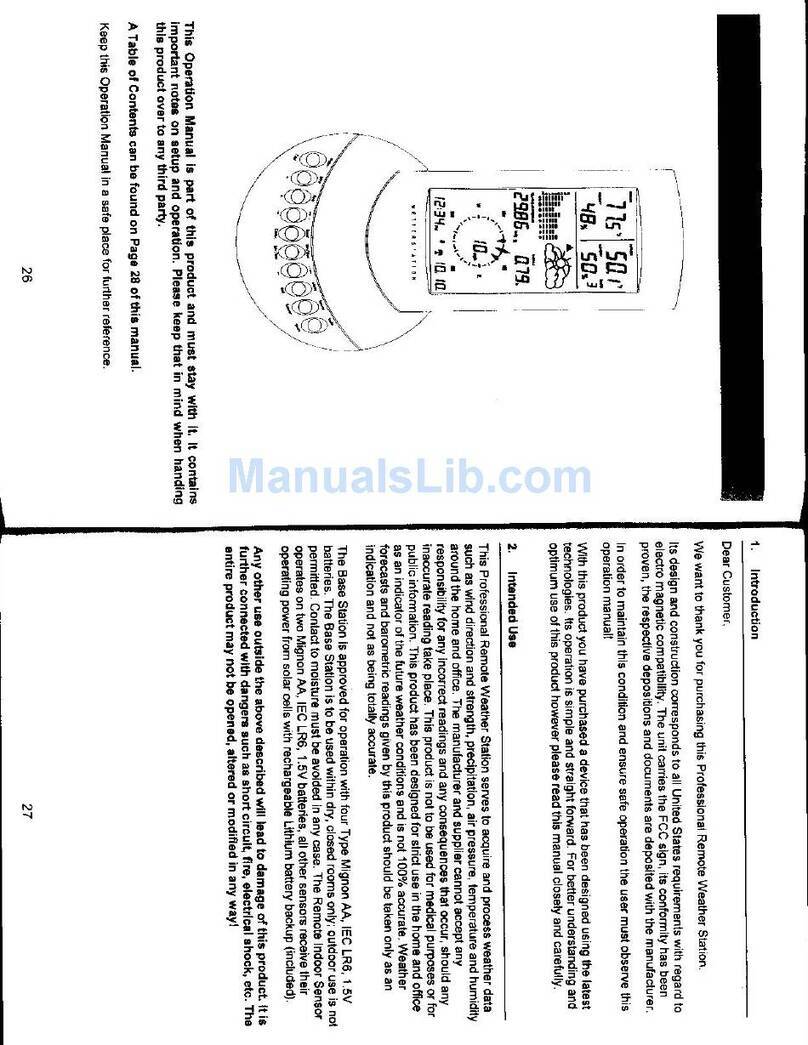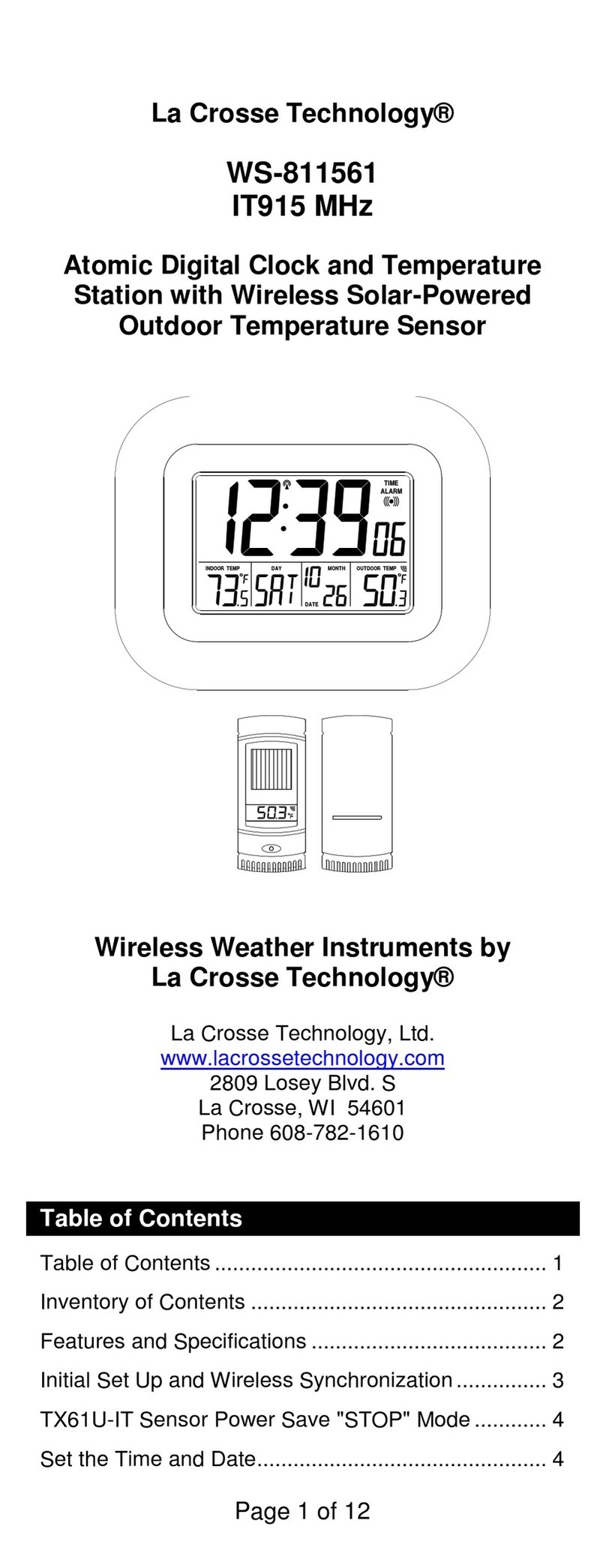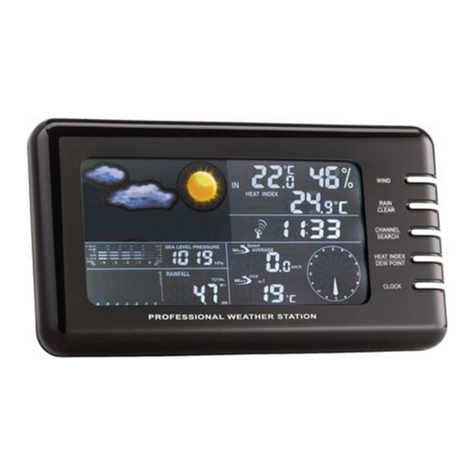1312
VIEW - Funk-Wetterstation
VIEW - Funk-Wetterstation
• Drücken Sie im Einstellungsmodus die +/°C °F oder -/RCC Taste, wenn Sie den DCF-Funkempfang
deaktivieren wollen (RCC OFF).
7.1.4 Einstellung der Zeitzone
• Im Einstellungsmodus können Sie die Zeitzonenkorrektur (+12/-12) vornehmen.
• Die Zeitzonenkorrektur wird benötigt, wenn das DCF Funksignal empfangen werden kann, die Zeit-
zone sich aber von der funkgesteuerten Zeit unterscheidet (z.B. +1 = eine Stunde später).
7.2 Alarmfunktion
• Drücken Sie die MODE Taste im Normalmodus, um in den Alarmmodus zu gelangen.
• ALARM und 07:00 (Voreinstellung) oder die zuletzt eingestellte Weckzeit erscheinen im Display.
• Halten Sie die MODE Taste gedrückt.
• Die Stundenanzeige blinkt und das Alarmsymbol erscheint im Display. Der Alarm ist aktiviert.
• Stellen Sie mit der +/°C °F oder -/RCC Taste die Stunden ein.
• Bestätigen Sie die Eingabe mit der MODE Taste und stellen Sie die Minuten ein.
• Drücken Sie die MODE Taste noch einmal.
• Im Display erscheinen die aktuelle Uhrzeit und das Alarmsymbol.
• Wenn die eingestellte Weckzeit erreicht ist, beginnt der Wecker zu klingeln.
• Das Alarmsymbol blinkt.
• Wird der Alarm nicht unterbrochen, schaltet sich der Alarmton automatisch nach zwei Minuten aus
und aktiviert sich erneut zur gleichen Weckzeit wieder.
• Drücken Sie eine beliebige Taste (außer SEARCH / SNZ), um den Alarm zu beenden.
• Drücken Sie die SEARCH / SNZ Taste, um die Snooze-Funktion zu aktivieren.
• Ist die Snooze-Funktion aktiviert, blinkt das zZ Symbol auf dem Display.
• Der Alarm wird für die Dauer von 10 Minuten unterbrochen.
• Halten Sie die +/°C °F oder -/RCC Taste im Einstellmodus gedrückt, gelangen Sie in den Schnelllauf.
• Das Gerät verlässt automatisch den Einstellmodus, wenn länger als 20 Sekunden keine Taste
gedrückt wird.
7.1 Manuelle Einstellung von Uhrzeit und Kalender
• Halten Sie die MODE Taste für drei Sekunden gedrückt. Die Stundenanzeige fängt an zu blinken und
Sie können mit der +/°C °F oder -/RCC Taste die Stunden einstellen. Mit der MODE Taste können Sie
nun nacheinander Minuten, Jahr, Monat, Tag, Sprache für den Wochentag (Voreinstellung: ENG), 12-
oder 24-Stunden-Zeitsystem (Voreinstellung: 24 Hr), DCF Empfang (Voreinstellung: RCC on) und die
Zeitzone (Voreinstellung: 00) ansteuern und mit der +/°C °F oder -/RCC Taste einstellen.
• Bestätigen Sie die Eingabe mit der MODE Taste.
• Bei erfolgreichem Empfang des DCF-Funksignals und bei aktiviertem Empfang wird die manuell ein-
gestellte Zeit überschrieben.
7.1.1 Spracheinstellung für den Wochentag
• Im Einstellungsmodus können Sie die Sprachauswahl für den Wochentag vornehmen: Deutsch
(GER), Englisch (ENG), Italienisch (ITA), Französisch (FRE), Holländisch (DUT), Spanisch (SPA) und
Dänisch (DAN).
7.1.2 Einstellung der 12- und 24 Stunden-Anzeige
• Im Einstellungsmodus können Sie die 12- oder 24 Stunden - Anzeige auswählen.
• Im 12-h-Format erscheint AM (vormittags) und PM (nachmittags) auf dem Display.
7.1.3 DCF-Funkempfang
• Standardgemäß ist der DCF-Empfang aktiviert (RCC on) und nach erfolgreichem Empfang des DCF-
Funksignals ist keine manuelle Einstellung erforderlich.
TFA_No. 35.1142_Anleitung_04_17 05.04.2017 14:58 Uhr Seite 7
